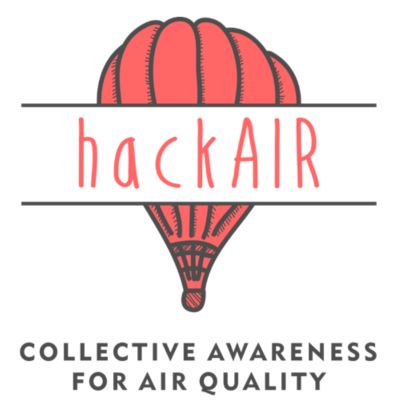Making the invisible visible
We have invited Sonja Grossberndt to tell us about hackAIR, a project that aims to raise people’s awareness about air quality, making the invisible air pollution visible. The hackAIR project provides citizens with tools for measuring air pollution and visualizing their data to establish a collective awareness platform for air pollution.
Why bother about air pollution?
Air quality is a reason for concern since it is affecting people’s health, quality of life and life expectancy. In a European wide survey from 2014 every other respondent identifies air pollution as main environmental concern. In the Eurobarometer 2013 survey, almost six out of ten Europeans claim that they are not or not well enough informed about air quality issues.
To improve this situation and encourage changes in behavior, better accessible and relevant information about air quality is required, for the general population and decision-makers.

Sonja Grossberndt (NILU). Foto: Ingar Næss
The hackAIR approach towards awareness raising
The H2020 hackAIR project (01/2016-12/2018) is developing an open technology platform to access, collect and improve information on air quality in Europe. It combines official air quality data with results from people’s own measurements – using Arduino sensor modules, sky pictures from mobile phone and webcams, as well as low-tech measurements.
Through data integration and data fusion methodologies, users will get access to the hackAIR platform through web and mobile applications. The platform has been developed in a co-creation process with the project team and potential users and will contain all collected and already available data.
In order to guarantee the successful outcome of any participatory project, we have to be able to provide the volunteers with an answer to the questions “Why should I join?”and “What’s in it for me?”
What’s in it for me?
Co-creation activities are partially the answer. Through their personal engagement, volunteers feel that they “own” part of the product, since they have been actively involved in the creation process. Ownership creates motivation to participate.
Equally important is the provision of user-friendly, easy to understand information. In hackAIR, this would be for example information on what implications the different air quality levels have on people’s everyday life; what they can do with the obtained knowledge. (e.g. personalized air quality information – “today air quality is good - go outside for a picnic”, “bad air quality today - rather stay inside today”, …). These activities will go beyond simple awareness raising and towards capacity building and behavioral changes of the participants.

Challenges with volunteers
Finding people that would be willing to carry out own measurements and continue their contribution over a longer period (i.e. several months) is not an easy undertaking. From our experience, it is easier to engage with people that are either affected by air pollution (e.g., asthmatics, cyclists), or that are interested in environmental issues.
In hackAIR, we are also looking for technology geeks that would be willing and able to build their own sensors. Building a sensor is one thing, but actually using it and providing the hackAIR platform with measuring results over a several months, is not very appealing for everybody.
It is important to know people’s motivation – and how to keep it upright!
This is a well-known problem in crowdsourcing and participation initiatives. The so-called gamification approach has been used recently to motivate people to participate. However, participants in the hackAIR co-creation workshops seemed to be little keen on the gamification approach. Instead, they would rather prefer feedback on the positive outcome on society based on their air pollution measurement activities.
Last but not least: privacy and security
Involving volunteers, issues around privacy and data security have to be tackled, and always have to comply with both national and European law.
Privacy and security issues should play a crucial role in any participatory project
People attending our co-creation workshops clearly stated that they wouldn’t be willing to provide much personal information in order to obtain access to the hackAIR platform and to be able to share own observations and data.
The hackAIR case studies will start in Norway and Germany in September 2017. We aim to launch the final version of the hackAIR platform in late 2018, having establish by then a collective awareness about human exposure to air pollution.
----------------------
This is a guest post by Sonja Grossberndt (NILU-Norwegian Institute for Air Research). In hackAIR, Sonja is co-leading the case study in Norway, including the co-creation process related to the hackAIR platform. Follow the project progress on twitter: @hack_air.
Questions or something to add? Want to be part of the iResponse stakeholder group or involved in other ways? We want to hear from you! Leave a comment below or contact us.
You also find us on twitter:@iresponse_rri. #crowds4research